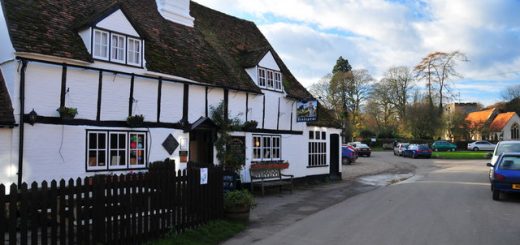Clifton Suspension Bridge
Spanning the Avon Gorge between Leigh Woods in Somerset and Clifton in Bristol (a distance of 214 meters), the Grade I listed Clifton Suspension Bridge has been an iconic landmark for nearly 150 years and although it was originally designed for horse drawn vehicles, today it carries 4 million cars each year. It was designed by Isambard Kingdom Brunel (born 9 April 1806 – died 15 September 1859) and completed in 1863, four years after his death. Unfortunately the Clifton Suspension Bridge became a popular site for suicide and it is the ghosts of those who jumped into the Avon Gorge that are said to haunt the bridge.
 The history of the bridge though dates back to 1754 and a wine merchant from Bristol named William Vick who bequeathed £1000 in his will to be invested and to eventually pay for the construction of a stone bridge over the Avon Gorge linking what was them Gloucestershire and Somerset. By 1829, Vick’s initial investment was worth £8000 but the cost of building a stone bridge over the Gorge was estimated to be around £90,000. Affording a stone bridge was unrealistic so the committee responsible for the bequest gained permission to change it to a suspension bridge made of iron through an Act of Parliament. To offset the cost of construction and pay for the bridges maintenance it was also decided that a toll would have to charged.
The history of the bridge though dates back to 1754 and a wine merchant from Bristol named William Vick who bequeathed £1000 in his will to be invested and to eventually pay for the construction of a stone bridge over the Avon Gorge linking what was them Gloucestershire and Somerset. By 1829, Vick’s initial investment was worth £8000 but the cost of building a stone bridge over the Gorge was estimated to be around £90,000. Affording a stone bridge was unrealistic so the committee responsible for the bequest gained permission to change it to a suspension bridge made of iron through an Act of Parliament. To offset the cost of construction and pay for the bridges maintenance it was also decided that a toll would have to charged.
A competition with a 100 Guinea prize fund was held to design the bridge and the judge was the famous Scottish engineer Thomas Telford (born 9 August 1757 – died 2 September 1834). Telford had designed the 1826 suspension bridge over the Menai Strait, linking Anglesey to mainland North Wales. This bridge is 180 meters long and was the longest suspension bridge built to that date. It is said Telford was convinced that a longer suspension bridge than his Menai Bridge could not be built and he rejected each of the submitted competition designs in favor of his own design of a bridge with Gothic towers which the public disliked. A second competition was held and on 16 March 1831 Isambard Kingdom Brunel with his Egyptian inspired tower design (one of four designs he submitted) was announced the winner.
 The construction of the Clifton Suspension Bridge was plagued with problems, both financially and contractually, the consequence of which was long delays. On 21 June 1831 the foundation stone was laid during a ceremony at the Clifton side of the gorge, however in October of that year the Bristol Riots began and work on the bridge was stopped. In 1836 work on the bridge resumed after having been halted for 5 years following the riots. However by 1843 the funds to cover the construction of the bridge ran dry and in 1851 some of the iron for the Clifton bridge was sold and used for another of Brunnel’s designs, the Royal Albert Bridge.
The construction of the Clifton Suspension Bridge was plagued with problems, both financially and contractually, the consequence of which was long delays. On 21 June 1831 the foundation stone was laid during a ceremony at the Clifton side of the gorge, however in October of that year the Bristol Riots began and work on the bridge was stopped. In 1836 work on the bridge resumed after having been halted for 5 years following the riots. However by 1843 the funds to cover the construction of the bridge ran dry and in 1851 some of the iron for the Clifton bridge was sold and used for another of Brunnel’s designs, the Royal Albert Bridge.
In 1860 the Hungerford Suspension Bridge (another of Brunnel’s bridges) over the River Thames was demolished and the chains were bought and used on the Clifton Suspension Bridge. After a slight redesigned by Sir John Hawkshaw and William Henry Barlow, the bridge was opened in 1864.
 Between 1974 and 1993 a total of 127 (93 men and 34 women) fell from the bridge, suspected suicides. In ‘Suicide from the Clifton Suspension Bridge in England’ by M Nowers and D Gunnell (1996) noticed that ‘Suicide by jumping is significantly more common in the Bristol and District Health Authority (9.3% of all suicides) than in England and Wales (4.9% of suicides)’ concluding that ‘Patterns of suicide in the Bristol and District Health Authority are affected by the presence of the Clifton Suspension Bridge.’ In 1998 barriers were installed to prevent jumpers and the amount of those leaping from the bridge each year has reduced.
Between 1974 and 1993 a total of 127 (93 men and 34 women) fell from the bridge, suspected suicides. In ‘Suicide from the Clifton Suspension Bridge in England’ by M Nowers and D Gunnell (1996) noticed that ‘Suicide by jumping is significantly more common in the Bristol and District Health Authority (9.3% of all suicides) than in England and Wales (4.9% of suicides)’ concluding that ‘Patterns of suicide in the Bristol and District Health Authority are affected by the presence of the Clifton Suspension Bridge.’ In 1998 barriers were installed to prevent jumpers and the amount of those leaping from the bridge each year has reduced.
According to the Paranormal Database ‘The shades seen drifting around on the bridge are thought to belong to those who have jumped off, taking their own lives.’
George Green from Portishead was the first person to jump from the bridge in May 1866. ‘He presented himself at the toll house and appeared to be in thoughtful mood’, the report continued, ‘he was observed to press his hand to his head as if suffering from some painful sensation there. Almost immediately afterwards he placed his hands upon the railings, which are about four feet high, and jumped over. His body was observed to twirl over as it descended and then to fall with a heavy thud upon the mud of the Avon, where the tide had receded’.
 One notable jumper Sarah Ann Henley who was 22 when leapt from the bridge on 8 May 1885 because her lover had ended their relationship. ‘The rash act was the result of a lovers quarrel. A young man, a porter on the Great Western Railway, determined to break off the engagement, wrote a letter to the young woman announcing his intention. This preyed on the girl’s mind, and she, in a state of despair, rushed to end her life by the fearful leap from the Suspension Bridge.’ [Bristol Magpie, 16 May 1885]. According to The Western Daily Press, 9 May 1885 ‘Yesterday at a little past mid-day Sarah Ann Henley of 48 Twinnell Road, St. Phillips, leaped from the Suspension Bridge,and, singular to state, when picked up in the mud below was conscious, and very soon after was able to state her name and address. The person that had such a marvellous escape is a young woman, 22 years of age, living with her father, a respectable working man, at the above address. She had been for some time keeping company with a young man, but recently had a disagreement with him, and a “few words” between them a night or two ago were followed by a parting and a letter in which he gave up the companionship. The letter was received on Thursday and was taken much to heart by Henley, who was noticed by the neighbours to be looking depressed in spirit. She was seen in Twinnell Street yesterday morning at about 11 o’clock, and this depression was noticed then. At a quarter past twelve she leapt from the bridge. The woman fell as if she was going into the river which was running down. The tide was extremely low. The soft mud banks were accordingly not completely covered by water. A rather high wind was blowing and the woman’s dress offered a good deal of resistance to it, not only materially checked the rapidity of her descent, but instead of falling vertically she was carried onto the Gloucester bank, where she fell on the mud in almost a sitting posture. The mud yielded freely, and the woman, straightened out to full length, sank some distance into it. An alarm was given, and John Williams, of Ashton Gate and George Drew proceeded to get her out of the mud into the roadway. Brandy was sent for, and, failing to secure the use of a passing cab, a messenger was despatched to the Clifton Police Station for the stretcher. She was conveyed on the stretcher by several constables to the institution, where after being seen by the surgeons in the casualty room, she was placed in one of the wards. She was not considered to be in any immediate danger.’ She went to live for a further 62 years.
One notable jumper Sarah Ann Henley who was 22 when leapt from the bridge on 8 May 1885 because her lover had ended their relationship. ‘The rash act was the result of a lovers quarrel. A young man, a porter on the Great Western Railway, determined to break off the engagement, wrote a letter to the young woman announcing his intention. This preyed on the girl’s mind, and she, in a state of despair, rushed to end her life by the fearful leap from the Suspension Bridge.’ [Bristol Magpie, 16 May 1885]. According to The Western Daily Press, 9 May 1885 ‘Yesterday at a little past mid-day Sarah Ann Henley of 48 Twinnell Road, St. Phillips, leaped from the Suspension Bridge,and, singular to state, when picked up in the mud below was conscious, and very soon after was able to state her name and address. The person that had such a marvellous escape is a young woman, 22 years of age, living with her father, a respectable working man, at the above address. She had been for some time keeping company with a young man, but recently had a disagreement with him, and a “few words” between them a night or two ago were followed by a parting and a letter in which he gave up the companionship. The letter was received on Thursday and was taken much to heart by Henley, who was noticed by the neighbours to be looking depressed in spirit. She was seen in Twinnell Street yesterday morning at about 11 o’clock, and this depression was noticed then. At a quarter past twelve she leapt from the bridge. The woman fell as if she was going into the river which was running down. The tide was extremely low. The soft mud banks were accordingly not completely covered by water. A rather high wind was blowing and the woman’s dress offered a good deal of resistance to it, not only materially checked the rapidity of her descent, but instead of falling vertically she was carried onto the Gloucester bank, where she fell on the mud in almost a sitting posture. The mud yielded freely, and the woman, straightened out to full length, sank some distance into it. An alarm was given, and John Williams, of Ashton Gate and George Drew proceeded to get her out of the mud into the roadway. Brandy was sent for, and, failing to secure the use of a passing cab, a messenger was despatched to the Clifton Police Station for the stretcher. She was conveyed on the stretcher by several constables to the institution, where after being seen by the surgeons in the casualty room, she was placed in one of the wards. She was not considered to be in any immediate danger.’ She went to live for a further 62 years.
A bankrupt grocer Charles Brown decided to reduce his outgoing expenses by killing two of his five children in September 1896. He took his two daughters Elsie (age unknown) and Ruby (aged 12) to the bridge one night and had them walk along the bridge in the high winds and pouring rain before picking them up and flinging them over the rails. Somehow the high winds saved their lives and they fell in the river close to some boats and were quickly rescued with minor injuries.
One statistic I found says over 400 people have jumped from Clifton Suspension Bridge.
Bridge Length: 214m
Tower Height: 26m
Bridge Height Over High Water: 76m




Re: Clifton Suspension Bridge
There is also a haunting tradition attached to Leigh Woods. The apparition of Isambard Kingdom Brunel is said to walk to the edge of Avon Gorge on the Leigh Woods side and look out toward his bridge……which he never saw completed in life.